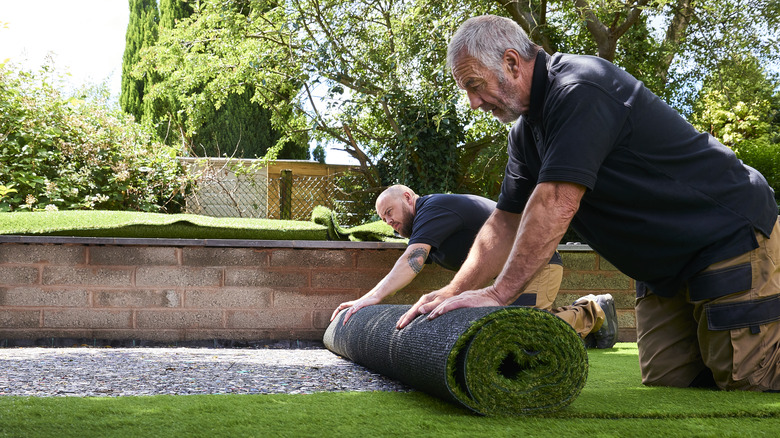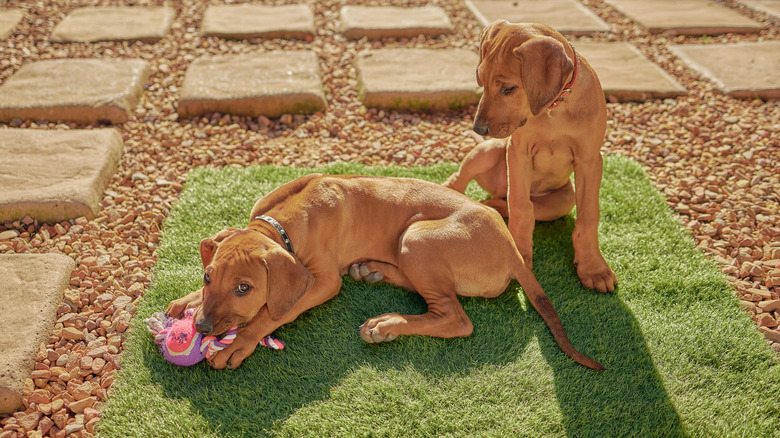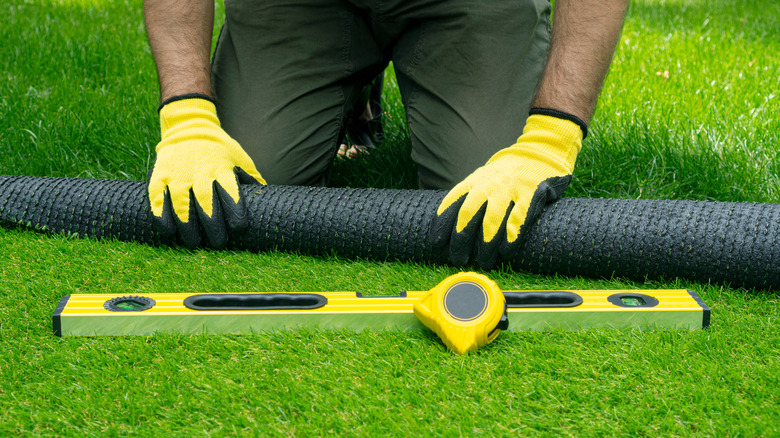When Will You Need To Replace Your Artificial Grass?
Having a lush, green lawn can be a source of pride for homeowners. However, some people simply don't have the time or interest in the amount of work it takes to fertilize, weed, water, and mow to try to have the best yard in the neighborhood. Your property also may not be conducive to growing grass if it is particularly shady. As an alternative, you may want to consider artificial grass. With the expense of installing synthetic turf, though, you may be wondering how long it will last. If following the proper installation methods and if using it in an average way, you can expect up to 20 years of usage from a synthetic turf installation. However, a poor quality product may last as little as eight years.
Following the proper installation process for artificial grass is vital to receiving the longest-lasting performance. If you do not prepare the subsoil properly or compact and level the infill according to the manufacturer's instructions, you could end up with low areas that collect water or that wear unevenly. You also need to secure any seams between the rolls properly, or they may curl, leading to a tripping hazard. Securing seams may require glue, tape, or a sewing system to connect them tightly. Some people hire a pro for the work of installing these rolls because of the challenges involved, although it can be a DIY project.
How to select high-quality artificial grass
There are many pros to installing artificial grass, including requiring far less maintenance than a natural grass yard. However, if you select a poor-quality material, you may find yourself doing a lot of repair work to keep the yard looking good, which defeats the purpose of switching from a natural to synthetic yard.
When selecting a brand of synthetic turf, be certain the quality is high. Don't settle for a cheaper product that doesn't include resistance to UV light. Make sure that the manufacturer provides a guarantee that its materials will not fade noticeably when exposed to constant sunlight. You may have a slight fading or discoloration over several years, but it's not something that should be easily noticeable, even if your yard has exposure to both heavy sunlight and heavy shade. If you have an older artificial grass product made more than a decade ago, fading may have been noticeable. Modern turfs from reputable manufacturers resist fading far more efficiently, though.
The highest quality artificial yard materials will consist of nylon, polyurethane, and polypropylene, all of which resist UV fading and problems with staining. If you have pets, you may worry about staining from urine and feces. However, high-quality materials in the artificial turf do not absorb liquid and other items that cause staining. You should simply be able to rinse off the blades of turf to remove any items that could lead to staining. Rain can also rinse the grass.
Avoiding uneven wear in an artificial grass installation
You also might need to replace the synthetic turf in your yard sooner than expected if you have uneven wear. A high-quality roll of turf from a reputable manufacturer will resist wear in normal circumstances, but you could end up with uneven wear if the installation process is incorrect.
One of the most important aspects of installing a synthetic yard is setting up the proper level and slope of infill before adding the roll of grass over the top. Infill creates a compacted base that delivers the firmness to prevent low spots from forming in the yard. The base is not compacted so tightly, however, that it would prevent rainwater from draining through it. Without the proper drainage slope for water flow, water could pool in the yard. Infills are available in a few different materials, including silica sand, gravel, and rubber crumbs. Follow the manufacturer's instructions for creating the infill base to be certain it will work with the roll of turf you selected.
If you have patterns of heavy wear in the turf, this may shorten the lifespan of the installation. If the kids play soccer in the same spot on the turf every day, the area in front of the goal will wear out quickly. The same thing could occur in a dog run where a dog paces along the same path all day. Move activities around the yard occasionally to prevent this type of wear.


